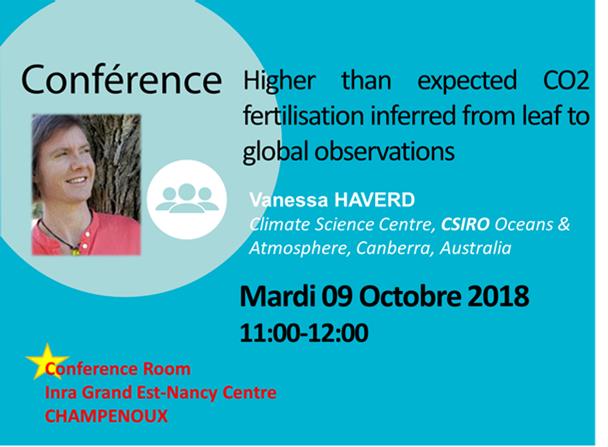
Abstract
Several lines of evidence point to an increase in the activity of the terrestrial biosphere over recent decades1-4, impacting the global net land carbon sink (NLS) and its control on the growth of atmospheric carbon dioxide (ca). Global terrestrial gross primary production (GPP) — the rate of carbon fixation by photosynthesis — has risen by (31 ± 5)% since 19004. This increase remains to be attributed. Here we show that this increase in GPP is predominantly driven by CO2.. We reconcile leaf-level and global atmospheric constraints on trends in modelled biospheric activity to reveal a global CO2 fertilisation effect on photosynthesis of 30% since 1900, or 47% for a doubling of ca above the pre-industrial level. Our historic value is nearly twice as high as current estimates3,5 (17 ± 4)% that do not use the full range of available constraints. Consequently, under a future low emissions scenario6, our projected natural land carbon sink (174 PgC, 2006 to 2099) is 57 PgC larger than if a lower CO2 fertilisation effect comparable with current estimates is assumed. These findings suggest a larger beneficial role of the land carbon sink in modulating future excess anthropogenic CO2 in lower emissions scenarios consistent with the target of the Paris agreement to stay below 2°C warming, and underscores the importance of preserving terrestrial carbon sinks.
Speaker
Vanessa Haverd, Climate Science Centre, CSIRO Oceans & Atmosphere, Canberra, Australia
Vanessa Haverd has a Ph.D. in physical chemistry (Oxford University, 2003), and joined the Continental Biogeochemical Cycles Team at CSIRO in 2007 as a terrestrial biosphere modeller. She has co-developed new descriptions of fundamental physical processes, including coupled transport of heat, water and stable isotopes in soil and litter, encapsulated in the SLI (Soil-Litter-Isotope) model; heat storage, and radiative transfer in plant canopies. In 2013, she published the first complete carbon budget for the Australian continent, quantifying the contribution of the Australian biosphere to the global carbon budget, using multiple observational constraints. More recently, she co-developed a novel approach to representing vegetation structural dynamics in Earth system modeling, introducing vegetation structure and disturbance patterns into land surface models. Vanessa contributes CABLE-POP simulations to the annual update of the Global Carbon Budget, as part of the TRENDY ensemble of global terrestrial biosphere models.


